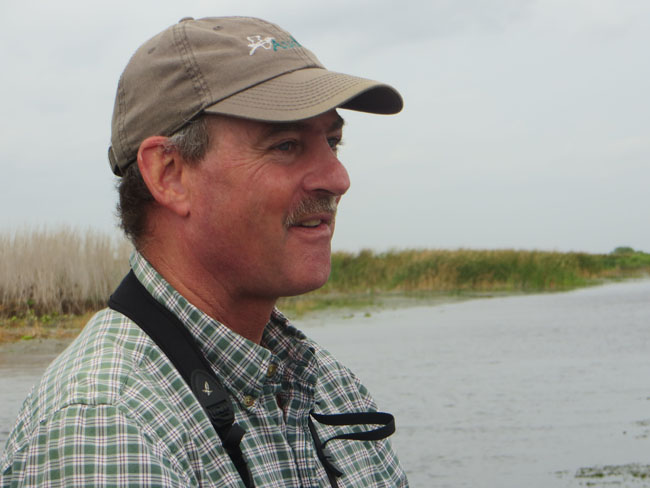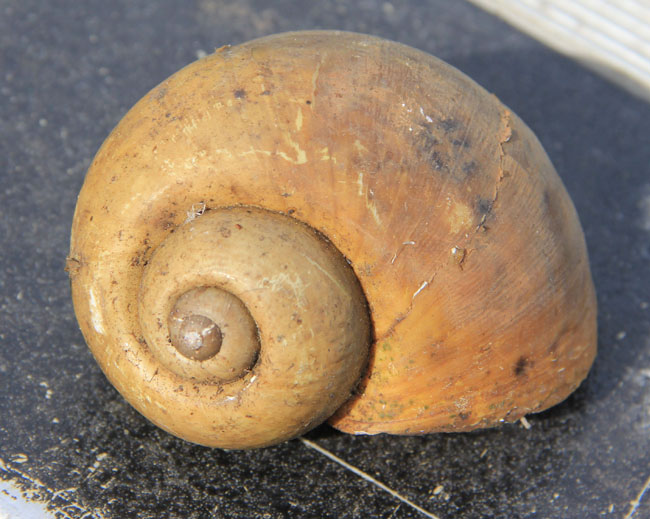Florida’s Changing Landscape Threatens A Birding Wonderland
By Marvin Williams
The Florida Everglades is a birding paradise and yet a few birds such as the Cape Sable seaside sparrow are in danger of extinction.
In North America alone, there are about 800 species of birds, 400 of which are in Florida alone. Some live year round in Florida, others migrate.
Paul Gray, science coordinator for Audubon Florida, says that the birds he is most worried about include the Florida grasshopper sparrow, Cape Sable seaside sparrow, and Everglades snail kite.
“It is mostly changes in the last 100 years of human development of Florida that have put these birds on the brink,” Gray said.

Photo by Sylvia Cunningham
Gray has been studying birds his entire career after earning degrees from the University of Missouri, Texas Tech, and the University of Florida.
“If you look at Florida’s location for birds flying to South and Central America from North America, we are a virtual “neck of the funnel” for traveling birds,” Gray said.
One of the birds most in danger is the Florida grasshopper sparrow, which resides North of Lake Okeechobee, the seventh largest fresh water lake in the United States.
Unlike the snail kite, grasshopper sparrows aren’t seen that often. They are located on three conservation areas, according to Gray.
Their population is down to about 200, Gray said.
Ninety percent of dry prairie, once endemic to Florida and essential to the survival of the Florida grasshopper sparrow, has been wiped out due to other uses like improved pasture.
“Unfortunately we have large areas of dry prairie in conservation lands,” Gray said. “Yet, we have not been able to manage them in a way that makes the sparrows thrive.”
Gray says that there has been discussion of whether the birds should be brought in for captive breeding but he is afraid that doing so might take the last of these birds out of the Florida Everglades.
The loss of dry prairie may not be the only reason for the decline of the Florida grasshopper sparrow. Other theories include genetic problems, diseases, or even predation.
“They’re a good candidate of being the next bird to be extinct from North America,” Gray said.
The Cape Sable seaside sparrow, unlike the Florida grasshopper sparrow has most of its original habitat in the Everglades National Park.
“Although we didn’t convert 90 percent of their habitat to cities and farms,” Gray said. “They are having trouble due to water and fire management issues.”
The Cape Sable seaside sparrow does not migrate and lives its entire life in the Everglades, according to Gray.
“There is a lot of research and special water management activities in place to protect these guys,” Gray said.
Shauna Cotrell, a seasonal park ranger who has been with the Everglades National Park since 2007, is also worried about the Cape Sable seaside sparrow .
“The Cape Sable seaside sparrow is very particular in the habitat that it likes and that habitat is changing,” Cotrell said. “If it loses that habitat it won’t nest.”
The population of the Everglades snail kite drastically dropped a few years ago but recently it has been increasing in number. The reason is the arrival of a non-native snail that can live for three years in a dry marsh, according to Gray.
Lake Okeechobee holds many of the eggs of these non-native snails, and has become a prime breeding ground for snail kites .
The birds declined in numbers because of droughts in 2000 and 2008, which killed off many of the native snails the kites used to feed on.
“The problem is the native snail is considered a ecosystem indicator,” Gray said. “It can’t be too dry.”
“The snail kite is a real good indicator for an ecosystems success,” Gray said. “If the snail kites are around then we’re managing well.”

Photo by Kaitlyn Carroll
Gray believes that one theory for the endangerment of birds in the Everglades is that recent drainage of the Everglades has wiped out most of the wetlands that many of these birds need to survive.
“We only have about one-tenth as many wetlands as we used to have,” Gray said.
In 1997, there were only four endangered birds in the Florida Everglades. This list included the wood stork, Everglades snail kite, red-cockaded woodpecker, and the Cape Sable seaside sparrow.
Now there are close to 20 endangered birds and most experts say it’s due to the recent change in the habitat of these birds by humans trying to restore the Everglades.
The number of wading birds is half of what it once was. Wrong hydrology, water quality problems and even invasive species can cause these birds to become unhealthy, according to Gray.
“Everglades restoration will be successful when we can manage the remaining system to support 50 percent of the birds we used to have,” Gray said. “Birds are but an indicator of ecosystem function and if we can get the birds back, most of the other things—fish, wetlands, plants, shrimp and so on should be in greater abundance.”
The problem extends far beyond Florida.
“The wrens and tree swallows that nest in boxes in your yard in Connecticut stay in Florida for the winter,” Gray said. “If we fail to provide suitable habitat, they won’t make it back to you.”